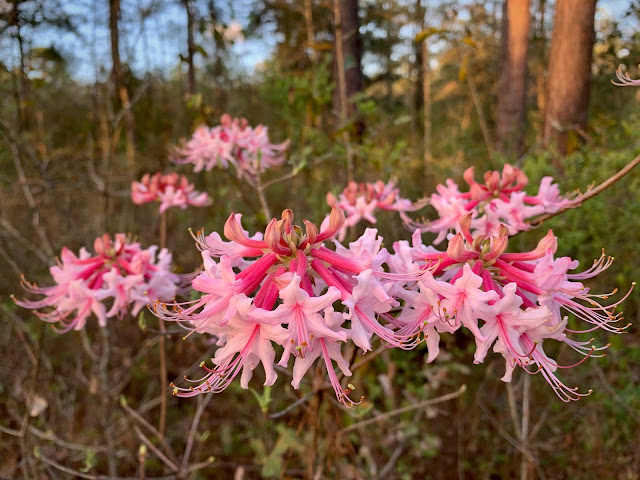Wednesday's Wildflower: Common Blue Violet
COMMON BLUE VIOLET, Viola sororia Willd.
Violet Family (Violaceae)
Submitted by Roger Hammer
The nearly orbicular, toothed leaves of this common species form a rosette measuring up to 3" across. The flowers reach ¾" wide and range from pale to rich blue (rarely white). It is not stoloniferous like many other members of the genus but may form dense colonies, especially along moist trails that bisect its habitat. It principally blooms from January through July in mesic forests throughout mainland Florida but plants may be found flowering throughout the year. In cultivation, it will spread from seed in pots and wherever there is moist, bare soil in shady situations. The seeds of many violets are explosively dehiscent and can be flung several feet away from the parent plant.
 |
| Viola sororia, photo by Roger Hammer |
The nearly orbicular, toothed leaves of this common species form a rosette measuring up to 3" across. The flowers reach ¾" wide and range from pale to rich blue (rarely white). It is not stoloniferous like many other members of the genus but may form dense colonies, especially along moist trails that bisect its habitat. It principally blooms from January through July in mesic forests throughout mainland Florida but plants may be found flowering throughout the year. In cultivation, it will spread from seed in pots and wherever there is moist, bare soil in shady situations. The seeds of many violets are explosively dehiscent and can be flung several feet away from the parent plant.
Viola is the classical Latin name for a violet and the name sororia means “sisterly,” alluding to its similarity to other violets. It is the state wildflower of Wisconsin, Rhode Island, Illinois, and New Jersey. Hover flies seek nectar from the flowers and are effective pollinators.
It was once called “lesbian flower” because, in the early 1900s, lesbians would offer flowers of this species to women they were wooing. This was called “sapphic desire” because the Greek poet Sappho (ca. 630–570 BC), who lived on the island of Lesbos (now Lesvos, and the source of the word “lesbian”) in the northeastern Aegean Sea, wrote a love poem about her lesbian partner wearing a garland of violet flowers, and violets still today remain a symbol for lesbian women. Sappho was a poetic genius who often mentioned Aphrodite, the goddess of love, in her poems, and would become the most acclaimed woman of ancient Greek history. After her death, Sappho was branded by the Christian church as a “whore” and her poetry was described as deviant works due to her “unnatural” love for other women. And all this became intertwined in the history of this simple violet flower, native to Florida.
Roger is a member of the Dade Chapter and is a noted author of wildflower guides. His wildflower guides include Florida Keys Wildflowers (2004), Everglades Wildflowers (2nd edition, 2014), and Central Florida Wildflowers (2016), and Complete Guide to Florida Wildflowers (2018).
FNPS: Native Violets
______________________________________________________________
Other links:
USF Plant Atlas: Viola sororiaFNPS: Native Violets



Comments